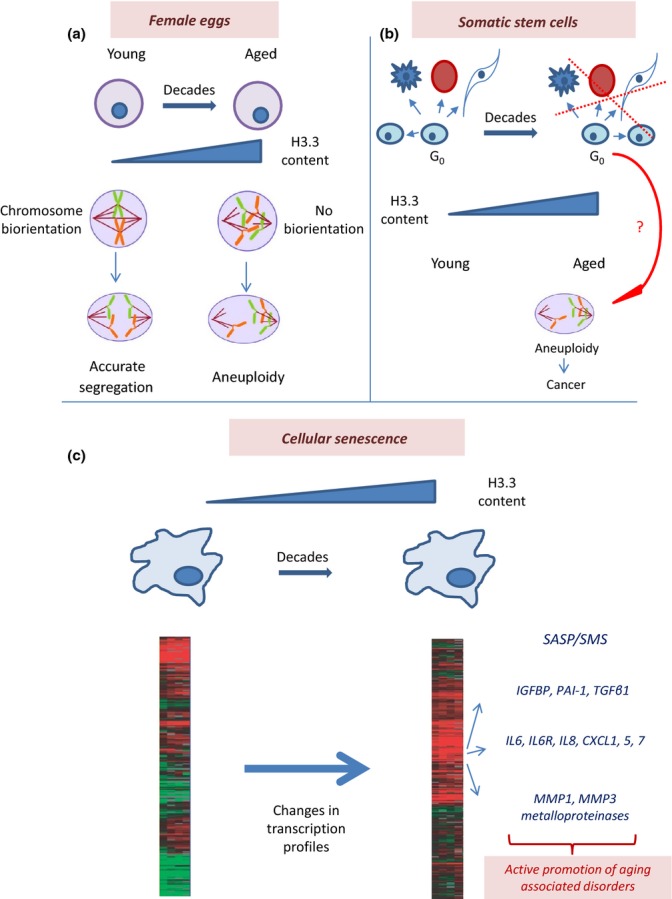Fig 2.

Possible relationship between the H3.3 dilemma and organismal aging. (a) Aging eggs might accumulate H3.3 in structural parts of their chromosomes, leading to negative consequences in chromosome/chromatid cohesion, resulting in increased aneuploidy. (b) Somatic stem cells might accumulate H3.3 in their heterochromatin, which could result in epigenetic reprogramming and negative consequences in terms of differentiation and self-renewal properties. Also, aneuploidy might contribute to increased cancer frequency in aged individuals. (c) In senescent cells, a Misincorporation of H3.3 at inappropriate genome locations could lead to changes in transcription profiles responsible for the specific (e.g., proinflammatory) properties of senescent cells (SASP/SMS phenomenon), which could actively contribute to organismal aging.
